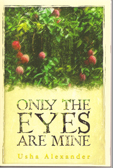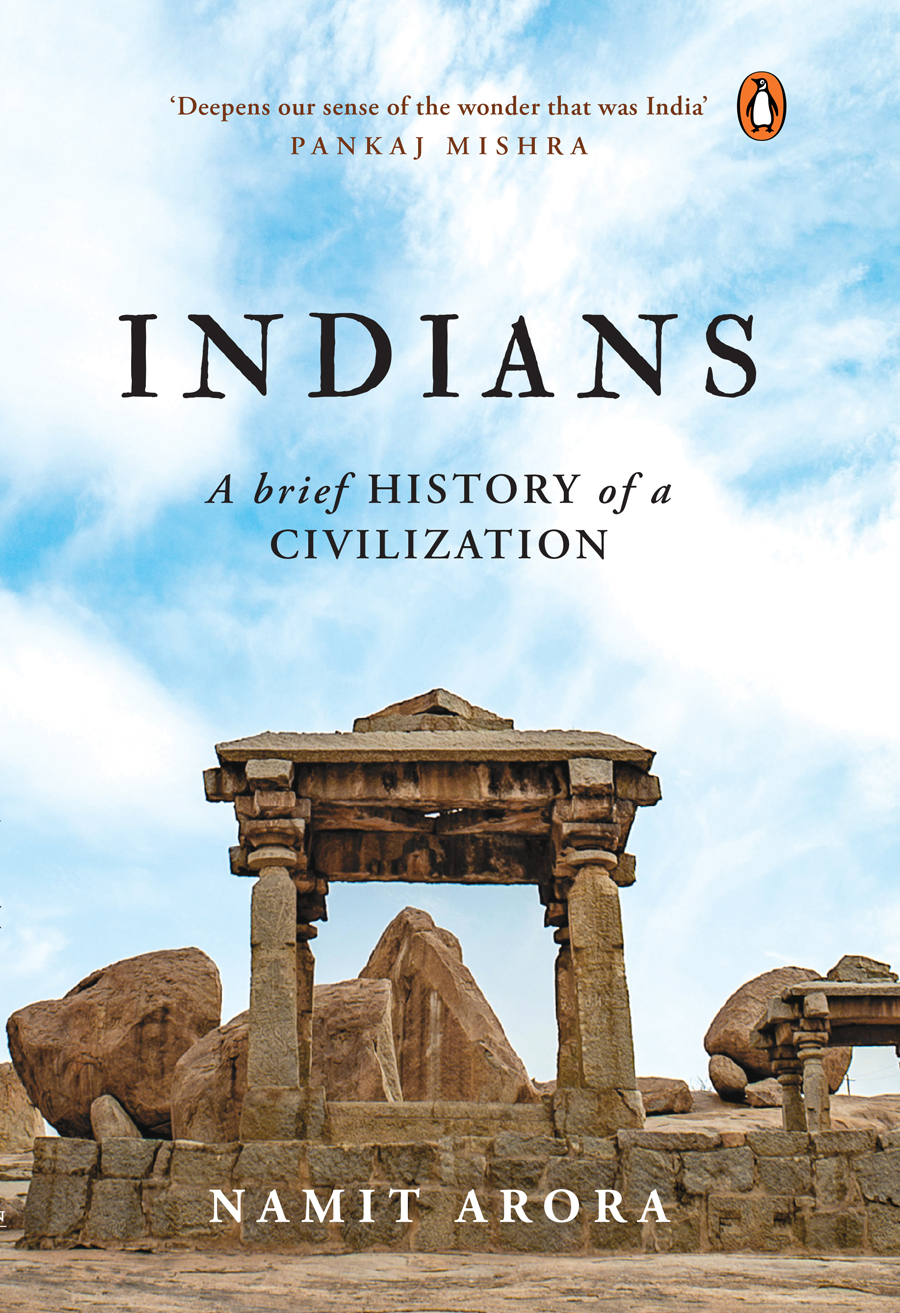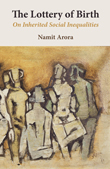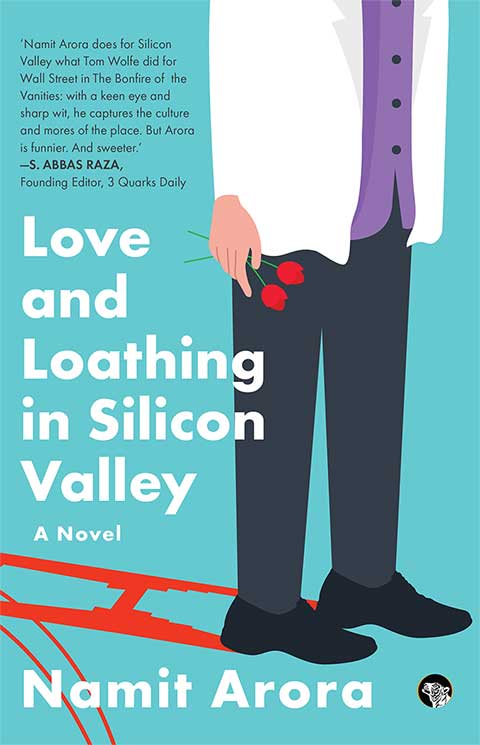| Index of articles from the Blog |
| Animals |
| Anthropology & Archaeology |
| Art & Cinema |
| Biography |
| Books & Authors |
| Culture |
| Economics |
| Environment |
| Fiction & Poetry |
| History |
| Humor |
| Justice |
| Philosophy |
| Photography |
| Politics |
| Religion |
| Science |
| Travel |
Books by
Books by
|
By Namit Arora | Mar 2010 | Comments
The Origins of Caste How the institution of caste took root and spread is still a hotly debated question among scholars, but its story begins c. 1500 BCE with the arrival of the Indo-Aryans into what is now Pakistan. Data from disciplines like linguistics, philology, and archaeology strongly suggests that these bands of nomadic pastoralists came from further west. Upon arrival, they encountered long settled rural communities, which were perhaps divided into subgroups based on occupation, much like guilds—they were not hierarchical, hereditary, or endogamous. The Indo-Aryans, whose culture became dominant, introduced into the region their social pyramid with three classes, or varnas (‘color’): the Brahmins (priests and teachers), the Kshatriyas (warriors and rulers), and the Vaishyas (traders and merchants). They added a fourth varna after their arrival: the Shudras (laborers and artisans). All four divisions appear in the earliest known Indo-Aryan text, the Rig Veda (but not the word ‘varna’), and were no doubt a feature of the emerging Vedic society. ‘According to the Mahabharata, the "colors" associated with the four [varnas] were white, red, yellow and black; they sound more like symbolic shades meted out by those category-conscious brahmanical minds than skin pigments.’[1] As the settled indigenous communities became part of the early Vedic society, they also adopted its principle of hierarchy—interwoven as it was with its cosmology, gods, and rituals—turning their own occupational subgroups into castes, or jatis. The main organizing principle of this hierarchy, proposed Dumont, had to do with ritual ‘purity’ and ‘pollution’ that members of each occupational subgroup were assigned at birth. The highest ‘purity’ points went to those associated with religious, intellectual, and administrative pursuits, the lowest to workers associated with dead bodies, human waste, tanneries, butchery, street cleaning, and such—most of these were in fact deemed too low to be part of the varna system at all, i.e., they were considered outcastes. Stated differently, ‘purity’ became a means of codifying social power relations using Brahmanical ‘knowledge’.
Many modern thinkers, including Tagore, have argued that while far from perfect, this was back then a practical way of bringing together highly diverse peoples, through which ‘men of different colors and creeds, different physical features and mental attitudes settled together side by side.’[3] In The Discovery of India, Nehru struck a stronger note of apologia: ‘Thus at a time when it was customary for the conquerors to exterminate or enslave the conquered races, caste enabled a more peaceful solution which fitted in with the growing specialization of functions.’ He saw caste as ‘necessary and desirable in its early forms, and meant to develop individuality and freedom’. Such thinkers argued that by assigning religious, political, and economic power to three different classes—the Brahmins, the Kshatriyas, and the Vaishyas—the system prevented their concentration in a single dominant racial or ethnic group, thereby creating a basis for cooperation and avoiding far greater friction, open slavery, and even genocidal wars. Historian John Keay, while calling this new social order ‘systematised oppression’, added that ‘it should also be seen as an ingenious schema for harnessing the loyalties of a more numerous and possibly more skilled indigenous population.’ In recent decades, many Hindu nationalists, keen to boost Hindu self-respect and pride, have whitewashed their social history and invented a rosier one. The four varnas, they claim, were wholly meritocratic in ancient times, based on personal choice, aptitude, and conduct—i.e., one’s varna depended on individual qualities, not on the accident of birth in a household. Some even go as far as saying that it was the invading Muslims and the British who perverted the varna system into the caste system that’s with us today.
The caste system eventually took on beliefs and social practices that have trampled on some of the most basic tenets of human dignity and inflicted untold misery, humiliation, and injustice on too many for too long. Among its worst victims are the Dalits (‘the oppressed’)—formerly ‘untouchables’—numbering one out of six Indians. Injury and prejudice are in fact so integral to the functioning of the caste system—doesn’t the extreme ‘purity’ of one caste require the extreme ‘impurity’ of another, and all that this entails?—that it’s hard to imagine today what a plausible defense of it by an insider or a cultural pluralist might look like. How old is untouchability? Historians report a few instances of it in pre-Gupta times, some as early as 400 BCE when Panini mentions it. From around the same time, one of the Jataka Tales—which contain stories about the Buddha’s past lives—mentions the Chandala, whose mere sight sully a merchant’s daughters and a priest. The Laws of Manu also advises that the impure Chandala must live outside the village and must not look at Brahmins when the latter are eating. If a Brahmin happens to touch a Chandala, he must bathe to regain purity. Historian Romila Thapar therefore dates the appearance of untouchability to over 2,000 years ago. Ambedkar likely got it wrong when he stated that ‘Untouchability was born some time about 400 A.D.’[4] Untouchability however became a socially significant phenomenon only in the early medieval period,[5] not long after Buddhism had peaked in the Subcontinent in mid-first millennium CE. It was well established when the Persian traveler Al-Beruni visited India in early 11th century, and saw many groups of ‘degraded outcastes’ who lived outside upper-caste villages and were ‘occupied with dirty work’. By then, this ‘dirty work’—the cleaning of other people’s shit by hand, the disposing and skinning of dead animals, etc.—was entirely hereditary, aided by the deep internalization of one’s own ‘natural’ place in the hierarchy, and enforced by the threat of verbal, physical, economic, and other violence. By late medieval times, bonded labor and sexual exploitation of the outcastes was common too. In some regions, the feudal landlord was even entitled to spend the first night with the newlywed wives of the ‘untouchable’ men in his employ, as in the infamous system of dola.[6] The caste system also worsened the plight of other women beyond the inequities inherent in all patriarchies. The desire to preserve upper-caste ‘purity’ created anxieties over miscegeny (intercaste breeding), including extra horror and penalties for hypogamy, where an upper-caste woman marries a lower-caste man. This demanded more stringent control over female sexuality, which then encouraged the custom of female child marriage. ‘Women’s cooperation in the system’, writes historian Uma Chakravarti, ‘was secured by various means: ideology, economic dependency on the male head of the family, class privileges and veneration bestowed upon conforming and dependent women of the upper classes, and, finally, the use of force when required.’[7] The Anatomy of Caste Castes are not a feature of Hindu society alone. A de facto caste hierarchy also exists among the Christians, Muslims, and Sikhs of India—even as people converted away from Hinduism, they couldn’t abandon the caste mindset. Moreover, while caste is today most visibly associated with India, forms of it have either existed or still exist elsewhere, including in Japan (with an outcaste group, the Burakumin), Korea, Europe, Hawaii, Arabia, and Africa, some with strikingly parallel notions of ‘purity’ and ‘pollution’. Dumont however pointed out that despite the presence of caste-like forms in these societies, they lacked a proper caste system, which ensures that no member of the society is beyond its classification, as in the Indian Subcontinent. And while it’s true that inherited inequalities are a part of the human story everywhere, many inequalities of caste in South Asia seem distinct in both scale and conception. Furthermore, ‘the impassable trenches of the caste system’, writes British historian Perry Anderson, created ‘truly deep impediments to collective action, even within language communities, let alone across them’. According to Anderson,
Prejudice invariably feeds upon culturally constructed ideas of human difference, including of caste, race, gender, beauty, reason, civilization, and so on. In The Indians, Sudhir and Katharina Kakar point out that psychological training to associate ‘purity’ with clean and ‘pollution’ with dirty begins early on in Indian households:
Regarding others as impure and dirty, and therefore subhuman, is also commonplace outside the context of caste. It is a universal trick designed to withhold empathy from and to dominate antagonistic groups, especially during ethnic conflicts. As the Kakars write,
A complementary view, articulated by scholar-activist Anand Teltumbde, is that British judicial and administrative practices, seemingly based on equality before the law, ‘undermined the importance of caste.’ The institutions of the British Raj, which seeded modernity in India, created ‘an enabling environment’ for the ‘emerging anticaste ethos’, ‘opened opportunities for economic betterment, particularly for the untouchables, and allowed both untouchables and shudras access to modern education.’[11] It was only later, Teltumbde holds, that certain dubious ‘modernist policies’ of the Indian State and a harsher capitalism, while erasing ‘certain caste divisions’, gave rise to new political and economic contestations—especially between a newly ascendant shudra class of peasant landowners and landless Dalits in rural India. This ‘reinforced caste and accentuated its viciousness as never before.’ For both Dirks and Teltumbde, then, caste has been far more malleable, dynamic, and responsive to mundane (non-religious) causes than in Dumont’s portrait. Other critics who see Dumont’s view of caste as monolithic argue that to a certain extent, social mobility has existed all along—a lower-caste group could change its way of life and move up within a generation or two, a process that has been called ‘Sanskritization’. The sociologist M. N. Srinivas has defined it as a process through which ‘a low or middle Hindu caste, or tribal or other group, changes its customs, ritual ideology, and way of life in the direction of a high and frequently twice-born caste.’ It might invent an ‘Aryanized’ version of its past and a link with an old royal dynasty. In late 19th century, for instance, the Yadavs of north India began claiming descent from Krishna himself. Within a generation or two, a caste could ‘rise to a higher position in the hierarchy by adopting vegetarianism and teetotalism, and by Sanskritizing its ritual and pantheon. In short, it took over, as far as possible, the customs, rites, and beliefs of the Brahmins, and adoption of the Brahminic way of life.’ However, it is also easy to overstate the actual incidence of Sanskritization, for it was resisted by the gatekeepers of tradition and remained rare, more an aspirational idea in the lower rungs of the hierarchy. ‘Srinivas normalizes, even glorifies, caste and Brahmanism,’ according to Braj Ranjan Mani, author of Debrahmanising History. ‘Implicit in his theory and his overall scholarship is that caste is amazingly fluid and fair’. Notably, Sanskritization not only didn’t challenge the caste system, it strengthened and legitimized the pursuit of what Ambedkar has called its ‘ascending scale of reverence and a descending scale of contempt.’ In effect, ‘By adopting the most prestigious features of the upper castes’ ethos, the lower castes explicitly acknowledge their social inferiority.’[12] Historian Christophe Jaffrelot has observed that the incidence of Sanskritization was higher among the so-called dominant castes, a term that describes ‘peasant Shudras who have occasionally risen to power because of their hold over land and their sheer number.’ Throughout history, he adds, the dominant castes that were ‘most successful in their attempt at conquering power managed to be recognized as Kshatriyas by Brahmins who invented genealogies for them.’ For recent examples, he points to Marathas (Maharashtra), Lingayats and Vokkalingas (Karnataka), and Kammas and Reddys (Andhra Pradesh). Citing Srinivas, he writes that ‘the Kshatriya category was the most open of the caste system.’ To Jaffrelot, ‘the very existence of "dominant" castes shows that the Brahminical view of society may describe (or prescribe) an ideal-type in the Weberian sense, but not [always] the reality of power relations: swarnas [those of the top three varnas] may not [always] be at the top of the socio-political hierarchy’,[12] despite being at the top in terms of ritual status and its privileges. Even social reform movements and policies of state sometimes provoke a shift in power relations and collective identities. The Jats of north India, for instance, have opportunistically claimed to be both Kshatriya and OBC in different contexts, first under the aegis of Arya Samaj’s missionary drive to Sanskritize lower castes and then in response to positive discrimination programs initiated by the Mandal commission.
The Persistence of Caste In the last 2,500 years, many Indians have rejected and attacked the caste system. ‘Egalitarianism is neither alien to India nor the gift of the West,’ writes Braj Ranjan Mani. ‘Common people everywhere have a tradition of aspiring to build an egalitarian world,’ a tradition that includes the Jains, the Buddhists, and the Carvakas in ancient times; Basava and Bhakti thinkers and poets like Namdev, Janabai, Ravidas, Kabir, and Tukaram in the medieval period; Phule, Iyothee Thass, Ambedkar, and Periyar in the colonial era. But the caste system has survived them all. Others, such as Gandhi, Vivekananda, and Ram Mohan Roy, did not reject it but advocated major reform. Gandhi, in particular, naively defended the idea of caste itself, imagining it could be made free of discrimination through education and ‘upliftment’, clashing bitterly with Ambedkar, an ‘untouchable’ who wrote The Annihilation of Caste, perhaps the sharpest critique of the caste system in modern times. Under British rule in the early 20th century, most Indian nationalists loudly debated the problem of caste and what to do about it, including the debate on what was worse: Western racism or Indian casteism. Gandhi, Lajpat Rai, Tagore, and Bose condemned the practice of untouchability while calling it not as bad as slavery in America. This came out especially in response to the question posed in 1929 by an American journalist: ‘Is the plight of the untouchable as hard as that of the Negro in America?’ No, argued most Indian leaders, citing the history of slavery, dehumanizing Jim Crow laws and the lynch mobs to make their case, but their stance was also shaped by their desire to deflate ‘superior’ westerners all too convinced of the white man’s burden. Ambedkar however argued the reverse, invoking not the de jure but the de facto position of the ‘untouchables’.[14] In juridical terms, ownership of a person, he conceded, made slavery worse than untouchability. But in practice, the slave, being property with value, gave the master an incentive to take ‘care of the health and well being of the slave’. Whereas, ‘No one is responsible for the feeding, housing and clothing of the untouchable.’ Furthermore, ‘slavery was never obligatory’, it only ‘permitted’ one to hold another as slave. ‘But untouchability is obliged,’ he wrote. A Hindu ‘is "enjoined" to hold another as untouchable’, a ‘compulsion [that the Hindu] cannot escape’. In one of his many debates with Gandhi, Ambedkar forcefully pointed out that ‘the outcaste is a byproduct of the caste system. There will be outcastes as long as there are castes. Nothing can emancipate the outcaste except the destruction of the caste system.’ Many have asked the questions that Ambedkar begins with in this passage from The Annihilation of Caste:
The Indian Constitution of 1950, in Articles 15-17, outlawed untouchability and other forms of caste-based discrimination, proclaimed equality of opportunity in public employment, and asserted the right of the State to make special provisions ‘for the advancement of any socially and educationally backward classes of citizens or for the Scheduled Castes and the Scheduled Tribes.’ From the start, the State reserved 22.5% of seats in public sector jobs, higher education, and central and state legislatures for SC/ST communities, and would later extend caste-based reservations in jobs and education to additional communities. In 1955, the Parliament also enacted The Untouchability (Offenses) Act, later called the Protection of Civil Rights Act. Given its weaknesses, it was supplanted in 1989 by a stronger hate crime legislation called the Scheduled Castes and Tribes (Prevention of Atrocities) Act. However, in this deeply conservative country, passing legislation is one thing, enforcing the laws and changing minds is quite another. Discrimination in housing, marriage, and employment is commonplace, even in the modern sectors of the economy. Especially outside the major cities, caste-based violence is still rife, ranging from bonded labor to rapes and murders that frequently go unpunished, not the least because casteism also abounds in the institutions of State that deal with crime and punishment. Even the Prevention of Atrocities Act, writes Teltumbde, is ‘oblivious of village dynamics’ in some ways. For instance, it’s oblivious to realities like collective punishment to members of a caste, ‘social and economic boycott and blackmail’. In recent decades, he writes, changes in the political economy of rural India have given the landowning castes ‘unprecedented wealth but failed to empower dalits to a comparable degree, thereby accentuating between the two groups the power asymmetry that is the prime mover behind atrocities.’ He attributes the post-1960s upsurge of caste violence in rural India to three factors: (1) the rise of a large, new class of shudra oppressors who have now ‘assumed the brahminical baton’ (2) ‘the relative progress’ and ‘assertiveness’ of Dalits, and (3) moral corruption, including Brahminism, in ‘the lowest rungs of the police and the bureaucracy’ that mediate ‘between the state and society’[18] (rungs that typically also include Dalits but who, barring exceptions, often learn to mimic the dominant institutional attitudes and norms rather than defy them at great risk to themselves[19]). Unfortunately, Brahmanism also pervades the higher echelons of State administration, ensuring that this systemic problem doesn’t get the attention it deserves. It’s true that ‘society perpetrates atrocities against dalits,’ adds Teltumbde. ‘But when dalits approach the police with grievances against such a society, they invariably encounter an equally repugnant and hostile force.’ State governments have often used violence to repress even Dalit protest marches and calls for justice following gruesome incidents, as in Khairlanji, Maharashtra.
Last but not the least, a new breed of scholars is contesting the dominant historical, cultural, and religious narratives of India, including those forged in recent centuries by a convenient collusion of the power and knowledge of Europeans and Brahmins. These scholars include Ambedkar in his large and lucid body of work, Kancha Ilaiah, author of Why I Am Not a Hindu, DR Nagaraj, author of The Flaming Feet and Other Essays, Gail Omvedt, author of Seeking Begumpura: The Social Vision of Anticaste Intellectuals, Gopal Guru, author of Humiliation: Claims and Context, Anand Teltumbde, author of The Persistence of Caste, Braj Ranjan Mani, author of Debrahmanizing History: Dominance and Resistance in Indian Society, and many others. More than ever, Dalits now understand that ‘Freedom is never voluntarily given by the oppressor; it must be demanded by the oppressed.’[23] But as Sivakami has written, the ‘relative silence on the part of non-Dalits on issues of caste amounts to an assumption that confronting casteism and untouchability is the sole responsibility of Dalits, just as it was assumed that confronting gender inequalities was the job of feminists.’ As Teltumbde points out, ‘Castes cannot be annihilated by Dalits alone for the simple fact that they have not created it. Unless the larger society owned up to this task, castes will not be annihilated.’[24] Notes:
All paintings by Savi Sawarkar (source). This essay has been updated since its first appearance on 3QD. |
Designed in collaboration with Vitalect, Inc. All rights reserved. |
|








